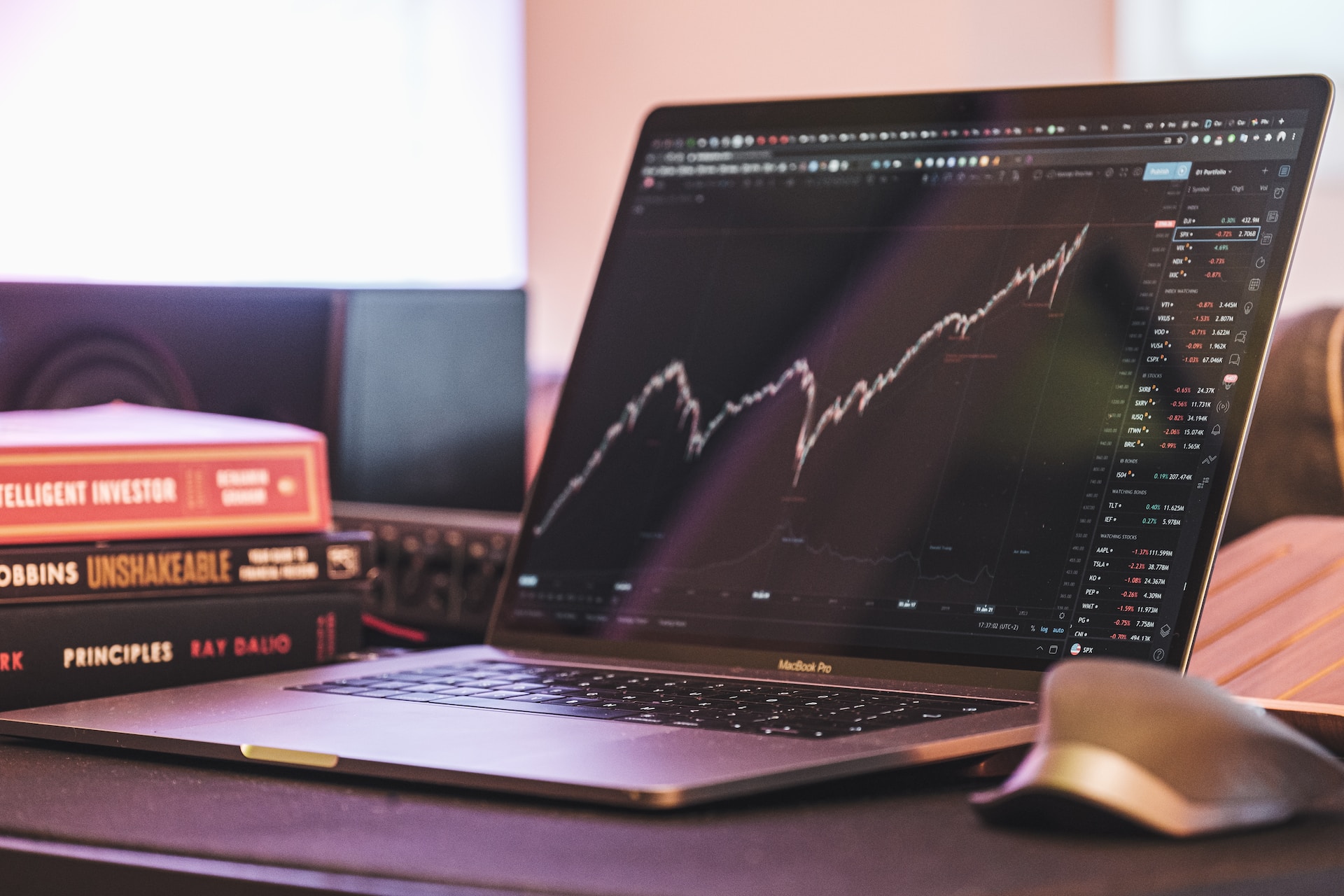The allure of the stock market is undeniable. With stories of fortunes made overnight and dreams of long-term financial freedom, many are tempted to dive into the world of stocks. But before taking that leap, it’s essential to have a strategy. In 2023, the landscape of investing has evolved with technological advances and market dynamics. Here are the top 10 best ways to how2invest in the stock market this year.
Why Invest in the Stock Market in 2023?

1. Technological Advancements & Innovative Sectors
The year 2023 has witnessed a surge in technological breakthroughs, with companies leading in areas like artificial intelligence, green energy, biotechnology, and decentralized finance. Investing in such sectors provides an opportunity to capitalize on the growth of revolutionary industries that are projected to dominate the future economic landscape.
2. Economic Resurgence Post-Pandemic
As the global economy recovers from the COVID-19 pandemic, stock markets in 2023 mirror this positive sentiment with renewed consumer confidence and business resurgence. This rebound presents promising potential for capital appreciation as businesses rebound and thrive.
3. Rise of ESG Investing
Environmental, Social, and Governance (ESG) investing has gained significant momentum by 2023. Investors are now more conscious of aligning their portfolios with companies that uphold sustainable and ethical practices. This shift isn’t merely a trend; it represents a fundamental change in how investments are approached, blending profitability with responsibility.
4. Democratization of Investing
The accessibility of stock market investing has reached unprecedented levels in 2023. Thanks to digital platforms, robo-advisors, and a myriad of educational resources, both seasoned investors and novices have the tools and platforms to participate in the stock market. This ease of access has infused the market with fresh perspectives and liquidity.
5. Unattractive Traditional Savings Avenues
With central banks maintaining low-interest rates globally, traditional savings methods, such as bank savings accounts or fixed deposits, offer meager returns in 2023. In contrast, the stock market, while inherently riskier, presents an avenue with potentially higher returns, especially for well-diversified portfolios. This disparity makes equities a more appealing choice for those seeking growth in their investments.
Strategies for How2invest in Effective Stock Market Investment in 2023

1. In-depth Company Analysis
To thrive in the stock market, a thorough understanding of a company’s operations, financials, and strategic position is crucial. Instead of making hasty decisions based on surface-level information, delve into balance sheets, income statements, and cash flow statements. Look for red flags, growth indicators, and signs of sound management. Reputable financial news platforms, quarterly earnings calls, and expert reviews can offer invaluable insights.
- Competitive Landscape: Evaluate the company’s standing against its competitors.
- Management Team: Assess the track record and capabilities of the company’s leadership.
- Future Projections: Consider the company’s growth prospects and future plans.
- Brand Loyalty: Gauge customer sentiment and loyalty to the brand.
- Product Line Diversity: Examine the breadth and variety of the company’s products or services.
- Supply Chain Robustness: Understand the resilience and adaptability of the company’s supply chain.
- Past Controversies: Investigate any historical issues or controversies that might impact its reputation.
2. Portfolio Diversification
A diversified investment portfolio can act as a safety net against market uncertainties. Instead of just spreading your money, be intentional about balancing risk and return by including assets from varied sectors, industries, and geographies. Factor in elements like market volatility, economic cycles, and geopolitical developments. Regular rebalancing ensures your original asset mix remains intact, preventing overexposure to any particular segment.
- Alternative Investments: Consider assets like real estate, commodities, or cryptocurrencies.
- Sector Spread: Ensure investments are spread across diverse economic sectors.
- Geographic Diversification: Look for investments in different countries or regions.
- Asset Classes: Diversify between equities, bonds, and liquid assets.
- Risk Profile Matching: Match assets with your risk tolerance and investment horizon.
- Emerging Markets: Consider the potential growth in developing economies.
- Rebalancing Frequency: Determine how often you’ll rebalance your portfolio to maintain the desired asset allocation.
3. Harnessing Robo-Advisors
Robo-advisors, thanks to AI enhancements, offer personalized and data-driven advice. Beyond mere asset allocation, modern platforms in 2023 can forecast trends and adjust portfolios dynamically to accommodate market shifts. As technology continues to evolve, consider platforms that seamlessly integrate human financial expertise with algorithmic precision, striking the balance between tech and touch.
- Eco-friendly Investing Options: Opt for sustainable or eco-friendly portfolios.
- Customization Levels: Check how much you can tailor your investments.
- Cost Structure: Understand the fee structure, including any hidden costs.
- Historical Performance: Analyze the past performance of robo-advised portfolios.
- Integration Features: See if they offer integrations with other financial tools or platforms.
- Security Measures: Ensure top-notch cybersecurity measures are in place.
- Customer Support: Evaluate the quality and responsiveness of their customer service.
4. Understanding Dollar-Cost Averaging
Investing consistent amounts over regular intervals, irrespective of market highs and lows, can be a potent strategy. It’s not merely about contributing periodically but understanding the power of averaging out entry points in volatile markets. By doing so, an investor can negate the effects of short-term market fluctuations, buying shares at an average price over time.
- Flexibility in Contribution: Determine if you can adjust the investment amount.
- Platform Options: Choose a platform that automates dollar-cost averaging.
- Investment Intervals: Decide on weekly, bi-weekly, or monthly investment schedules.
- Exit Strategy: Know when and how you might suspend or end your contributions.
- Performance Review: Regularly check how your investments are performing.
- Fee Implications: Be aware of any transaction fees associated with regular investments.
- Market Response: Adapt your strategy based on significant market events or shifts.
5. Commitment to Continuous Learning
The financial realm is dynamic, with evolving regulations, emergent sectors, and shifting market sentiments. To stay ahead, one must be an eternal student. Dive into educational resources, attend webinars, participate in forums, and read extensively. Knowledge can often be the differentiating factor between success and stagnation in investing.
- Financial News: Regularly follow financial news from reputable sources to stay updated.
- Workshops and Seminars: Attend investment-related workshops or seminars in your locality.
- Online Courses: Enroll in online platforms offering courses on finance and investing.
- Networking: Join investing clubs or online communities for knowledge exchange.
- Books: Dive into classic and contemporary literature on finance and stock market investing.
- Simulation Games: Engage in stock market simulation games to practice without real-world risks.
- Regulatory Updates: Keep an eye on updates or changes in financial regulations that might impact investments.
6. Embracing Value Investing
Recognizing undervalued stocks is just the beginning; the crux lies in discerning the reasons behind the undervaluation. Is it temporary market sentiment or structural business issues? A true value investor not only seeks undervalued assets but understands the potential for a turnaround or the inherent value others might have missed.
- Historical Price Patterns: Examine the stock’s historical price to identify buying opportunities.
- Intrinsic Value Calculation: Use methods like discounted cash flow to determine a stock’s intrinsic value.
- Margin of Safety: Understand and apply this principle to reduce downside risk.
- Industry Peer Comparison: Compare the chosen company’s metrics with its industry peers.
- Economic Moats: Identify companies with a competitive advantage or barrier against rivals.
- Company Debt: Examine the company’s debt profile and its ability to manage leverage.
- Catalysts: Look for potential future events that might unlock the company’s true value.
7. The Appeal of Dividend Stocks
Dividends can be a steady income source and often indicate a company’s financial health. Beyond the allure of periodic payouts, keen investors should study dividend histories, payout ratios, and the sustainability of these dividends. Companies with a robust track record of increasing dividend payouts can be golden geese in a well-diversified portfolio.
- Dividend Yield: Prioritize stocks with an attractive dividend yield compared to industry benchmarks.
- Payout Ratio: Assess the portion of earnings distributed as dividends.
- Dividend Growth Rate: Opt for companies with a history of increasing their dividends.
- Dividend Aristocrats: Familiarize yourself with companies that have consistently paid dividends for 25 years or more.
- Reinvestment Options: Check if the company offers dividend reinvestment plans (DRIPs).
- Tax Implications: Understand the tax implications of your dividend income in your jurisdiction.
- Industry Stability: Some sectors, like utilities, are traditionally more stable and consistent in paying dividends.
8. Keeping a Global Lens
Today’s markets are interconnected. A policy change or a corporate scandal halfway around the world can resonate globally. Adopting a global perspective means understanding international economic indicators, staying updated with global news, and being ready to adjust portfolios based on international events.
- Currency Exchange Risks: Factor in the implications of currency fluctuations on international investments.
- Emerging vs. Developed Markets: Understand the risk-reward profile of investing in emerging markets versus developed ones.
- Geopolitical Risks: Be aware of the geopolitical scenarios that can impact international investments.
- Cultural Nuances: Recognize that businesses may operate differently due to cultural nuances in foreign markets.
- Local Regulations: Familiarize yourself with local regulations and business environments of the countries you invest in.
- International Indices: Track key international indices like MSCI World, FTSE 100, or Nikkei 225 for a broader perspective.
- Tax Treaties: Check if there are any tax treaties between your country and the country of your investment to avoid double taxation.
9. Developing Emotional Fortitude
Emotional decision-making can be an investor’s downfall. Market swings, driven by sentiment, can elicit fear or exuberance. Developing a stoic approach, grounded in research and strategy rather than impulsive reactions, is pivotal. Setting clear investment goals, time horizons, and exit strategies can be invaluable guardrails during turbulent times.
- Avoiding Herd Mentality: Stay clear from making decisions based solely on popular sentiment.
- Reflection Period: Before making significant moves, give yourself a “cooling-off” period to avoid impulsive decisions.
- Regular Review: Periodically assess your investment strategy and its alignment with your goals.
- External Counsel: Sometimes, seeking an external opinion can help counteract personal biases.
- History Lessons: Remind yourself of historical market patterns to understand that markets have cycles of ups and downs.
- Investment Journal: Maintain a journal of your decisions, reasoning, and emotions during key investment moves.
- Stress Management: Adopt techniques like meditation or regular breaks to handle the stress of volatile markets.
10. Leveraging Expertise and Collaboration
While self-reliance is commendable, leveraging external expertise can offer new perspectives and insights. Regular consultations with financial advisors, analysts, or investment groups can expose you to different strategies, validate your choices, or highlight potential investment avenues previously overlooked.
- Financial Advisor Sessions: Regularly consult with a trusted financial advisor or wealth manager.
- Peer Discussions: Engage in discussions with peers to get different perspectives on market conditions.
- Investment Forums: Join online investment forums or platforms for expert insights and advice.
- Analyst Reports: Make a habit of reading analyst reports from reputed financial institutions.
- Collaborative Platforms: Use platforms that allow collaboration, like joint analysis or shared watchlists.
- Continuous Feedback: Seek regular feedback on your strategies and adapt based on constructive criticism.
- Independent Research vs. Collaboration: Strike a balance between doing your independent research and leveraging collective wisdom.
Conclusion
The 2023 stock market landscape is both challenging and promising. An informed, strategic approach—blending thorough research, technological tools, and emotional intelligence—can guide investors toward fruitful outcomes.
































































